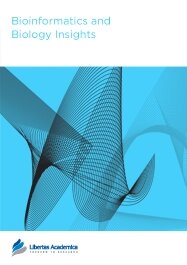

Publication Date: 22 Jan 2012
Type: Methodology
Journal: Bioinformatics and Biology Insights
Citation: Bioinformatics and Biology Insights 2012:6 1-9
doi: 10.4137/BBI.S8852

Genome-wide association studies (GWAS) have been successful in detecting common genetic variants underlying common traits and diseases. Despite the GWAS success stories, the percent trait variance explained by GWAS signals, the so called “missing heritability” has been, at best, modest. Also, the predictive power of common variants identified by GWAS has not been encouraging. Given these observations along with the fact that the effects of rare variants are often, by design, unaccounted for by GWAS and the availability of sequence data, there is a growing need for robust analytic approaches to evaluate the contribution of rare variants to common complex diseases. Here we propose a new method that enables the simultaneous analysis of the association between rare and common variants in disease etiology. We refer to this method as SCARVA (simultaneous common and rare variants analysis). SCARVA is simple to use and is efficient. We used SCARVA to analyze two independent real datasets to identify rare and common variants underlying variation in obesity among participants in the Africa America Diabetes Mellitus (AADM) study and plasma triglyceride levels in the Dallas Heart Study (DHS). We found common and rare variants associated with both traits, consistent with published results.
PDF (647.76 KB PDF FORMAT)
RIS citation (ENDNOTE, REFERENCE MANAGER, PROCITE, REFWORKS)
BibTex citation (BIBDESK, LATEX)
XML
PMC HTML
Bioinformatics and Biology Insights fills a gap in current journals. Ever more often, bioinformatics and detailed analysis of data creates novel, unexpected insights. It is good to have a journal which focusses on exactly this aspect of bioinformatics research, putting the biology insights upfront with high respect for the different methods in bioinformatics.

All authors are surveyed after their articles are published. Authors are asked to rate their experience in a variety of areas, and their responses help us to monitor our performance. Presented here are their responses in some key areas. No 'poor' or 'very poor' responses were received; these are represented in the 'other' category.See Our Results
Copyright © 2013 Libertas Academica Ltd (except open access articles and accompanying metadata and supplementary files.)
Facebook Google+ Twitter
Pinterest Tumblr YouTube